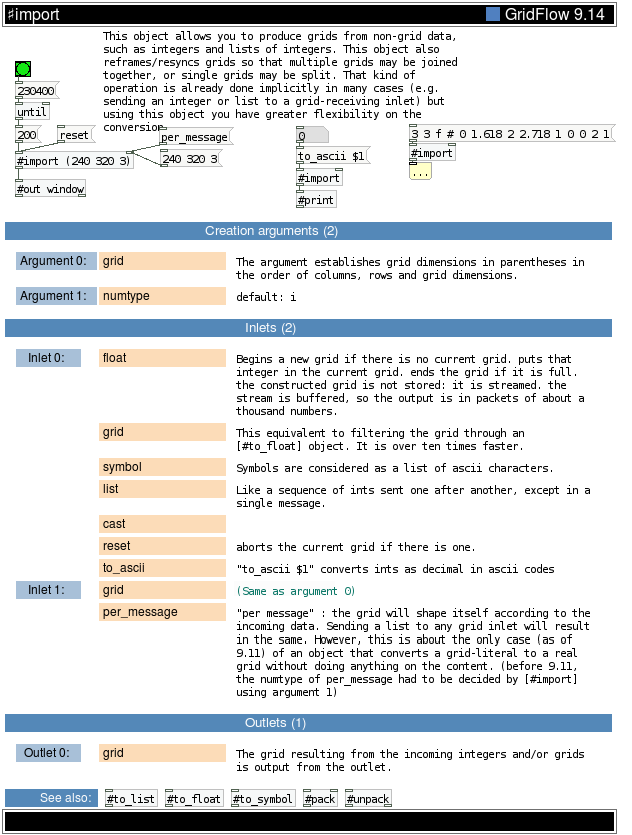
The argument establishes grid dimensions in parentheses in the order of columns, rows and grid dimensions. Symbols are considered as a list of ascii characters. Like a sequence of ints sent one after another, except in a single message. The grid resulting from the incoming integers and/or grids is output from the outlet. This object allows you to produce grids from non-grid data, such as integers and lists of integers. This object also reframes/resyncs grids so that multiple grids may be joined together, or single grids may be split. That kind of operation is already done implicitly in many cases (e.g. sending an integer or list to a grid-receiving inlet) but using this object you have greater flexibility on the conversion. This equivalent to filtering the grid through an [#to_float] object. It is over ten times faster. Begins a new grid if there is no current grid. puts that integer in the current grid. ends the grid if it is full. the constructed grid is not stored: it is streamed. the stream is buffered, so the output is in packets of about a thousand numbers. "to_ascii \$1" converts ints as decimal in ascii codes default: i aborts the current grid if there is one. "per message" : the grid will shape itself according to the incoming data. Sending a list to any grid inlet will result in the same. However, this is about the only case (as of 9.11) of an object that converts a grid-literal to a real grid without doing anything on the content. (before 9.11, the numtype of per_message had to be decided by [#import] using argument 1)